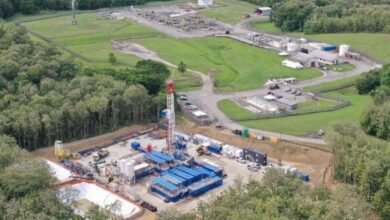Capital starting to flow back to E&P sector as companies keep focus on shareholder value
Consolidation and capital discipline creating a more favorable environment for investors despite lower commodity prices
By Stephen Whitfield, Senior Editor
Capital discipline remains the order of the day for the US onshore E&P market. With shareholders looking for the best returns on their investments, operators – and by proxy, the oilfield service (OFS) companies with which they work – have shifted their priorities away from pure reserve growth and toward returning value to shareholders.
Those efforts have shown positive results. In its 2024 US E&P Benchmarking Study, which analyzed the financial performance of the 50 largest E&P companies working in US onshore from 2019 to 2023, Ernst & Young (EY) highlighted an industry that has been able to increase the aggregate production of oil and gas, replace production from exploration drilling, and fund additional CAPEX while continuing to return value to shareholders.
“Capital discipline is the new reality,” said Bruce On, Strategy and Transactions Energy Partner at EY. “Oil and gas operators understand that their shareholders and investors are looking for the best return on their invested capital. They want to see dividends, share repurchases and/or earnings coming back through good business strategy. What we’ve seen over the last few years is that, from the good returns of the oil and gas sector, capital is actually returning.”
According to the study, total CAPEX among the 50 largest US E&Ps reached $142.3 billion, a 36% increase from 2022 numbers and the highest recorded CAPEX since 2020. Exploration and development expenditure totaled $93.1 billion, a 28% increase from the year before, as E&Ps capitalized on stable commodity prices and strong historical operating results. The increase in total CAPEX was primarily driven by increases in acquisitions and drilling activity, both of which were influenced by stabilizing commodity prices and companies benefiting from stronger balance sheets from high profits earned in 2022.
These figures point to a growing sustainability in economic performance within the industry, as E&Ps showed a tendency to reinvest their profits from the 2022 high point into core operations. Merger and acquisition (M&A) activity in 2023 and 2024 has enabled E&Ps to continue this trend, even as WTI dropped from the triple-digit figures seen in mid-2022.
Examples include ExxonMobil’s acquisition of Pioneer Natural Resources, which closed this year, and Chevron’s announced bid for Hess that is still under way. Additionally, ConocoPhillips announced an all-stock acquisition of Marathon Oil earlier this year, and Diamondback Energy agreed to merger terms with Endeavor Energy Resources. Although these are complex deals, in many cases involving a global portfolio of assets, each also has a core value driver around consolidation of positions in the US unconventional space.
Mr On said the consolidation seen in the US onshore sector will likely lead to further CAPEX increases in the near future. However, these increases do not signal an end to an industrywide capital discipline focus. In fact, it’s quite the opposite, he said: M&As have led operators to divest non-core assets from their newly combined portfolios, pushing investment into their core positions.
“E&Ps have been very open with their investors on how much they’re going to spend on drilling and development,” he said. “Oil and gas operators are looking across their portfolios and trying to optimize the best return for the capital spend being deployed. So, while we have M&A activity occurring, and we expect that M&A activity to continue, we expect to see operators continue to deploy capital to their existing and/or combined asset base for their production, whether they’re securing future and/or current production growth.”
Another trend underlying the stability of the sector is the cost efficiencies E&Ps are seeing, even as CAPEX increases. Several operators in the EY benchmarking study reported production costs below $10/boe, indicating long-term viability of oil and gas operations even in the event of downside economic imperatives.
Technology is a major factor behind these lower costs. Mr On cited increased automation, digitalization and the adoption of AI as key innovations that have allowed operators to reduce nonproductive time and unlock more efficiency at the wellsite. He also cited the design and development of longer laterals as an approach that has allowed companies to derive more value from their assets.
“One thing that’s exciting for us to see is the continued innovation of technology that is being looked at and evaluated in the field,” Mr On said. “There are step changes over time that we expect to see that will drive further efficiency. Some of it is lowering cost, some of it is efficiency in performance or efficiency in design. Some of it is around process and production. That won’t always result in squeezing the OFS service providers for lower rates – it just means that you’re going to drill more with less or produce more with less.”
While capital discipline has the investor community looking more favorably at the oil and gas sector, there are still some concerns moving forward. Emissions is a particular area of focus. The trend toward sustainability disclosure and performance continues to accelerate following the finalization of the US Securities and Exchange Commission’s (SEC) climate disclosure rules in March 2024. On top of that, EY noted in its report that growing requirements from many jurisdictions – including the EU’s Corporate Sustainability Reporting Directive and the United Nations Environment Program’s Oil and Gas Methane Partnership – are driving action on a host of GHG emissions reporting requirements.
In particular, Scope 3 emissions – which measure greenhouse gas emissions that occur from activities that a company indirectly affects in its value chain – have been difficult to measure.
The EY study did not examine compliance with specific reporting requirements, but less than half of the companies studied in the EY report (42%) voluntarily reported at least one category of Scope 3 GHG emissions in 2023. However, the percentage of the studied companies who are disclosing at least one category of their Scope 3 GHG emissions has grown from 26% in 2021 to 30% in 2022. The SEC’s finalized climate-related disclosure rules will not require disclosure of Scope 3 GHG emissions, unlike the first set of European Sustainability Reporting Standards issued by the European Commission and the climate-related disclosure requirements in the standards issued by the International Sustainability Standards Board.
“There is a real opportunity to make lifecycle emissions more meaningful than looking at raw Scope 3 emissions values,” Mr On said. “To look at it more broadly, the oil and gas industry has been scrutinized due to its emissions profile, but there has been a lack of compulsory, sensible standards for emissions reporting outside of the EPA’s GHG Mandatory Reporting Rule. These standards are clear and allow for comprehensive corporate disclosure, but they do fall a bit short on Scope 3 and how to integrate company-level reporting into an appropriate context where energy demand is still rising globally. How this will impact the investment thesis and profile of a company by an investor is to be determined.”
Even if Scope 3 emissions still remain a challenge, the industry’s progress on reporting Scope 1 (direct emissions from a company’s owned assets) and Scope 2 emissions (indirect emissions from energy used at a company’s facilities) have both advanced, which is a positive sign for investors.
The EY study pointed out that 80% of all studied companies voluntarily reported Scope 1 and Scope 2 GHG emissions in 2023, compared with 64% just two years earlier. In addition, 42% of the companies included external assurance over this reporting in 2023, compared with 21% in 2021. Further, 64% of companies reported a climate-related target or goal as part of their voluntary submissions.
“What we are pushing for as a firm and as a sector is that there needs to be some type of adoption toward a standard in reporting. If you look at how companies are reporting now, different methodologies are being used and deployed. Different companies will have very different ways of measuring emissions, what they report and how they report it. An investor needs to be able to take a subset of companies and understand what these numbers actually mean, or what the data tells them relative to others. We need reporting that helps us understand how to still deliver the energy the world needs while actively reducing carbon intensity,” Mr On said. DC




